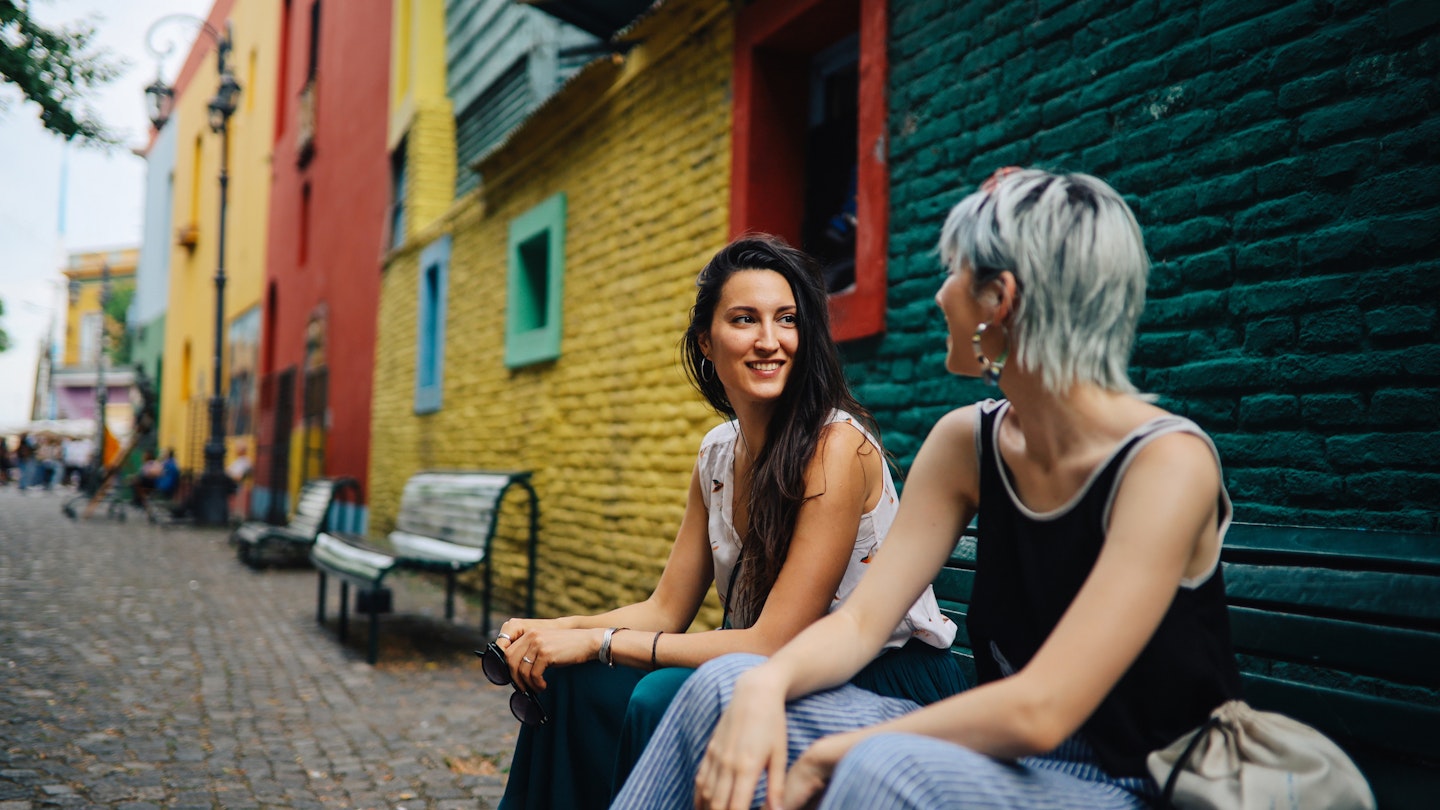Discover the Neighborhoods of Buenos Aires with GoTravelDaily
Argentina’s capital is a vibrant, buzzing metropolis that storms the senses and quickly gets under your skin. However, there’s much more to Buenos Aires than the swanky Recoleta and fashionable Palermo. This city invites exploration, allowing you to roam from district to district and soak up the unique vibe.
However, it can be challenging to know where to begin in this sprawling city. Fortunately, each of Buenos Aires’ 48 neighborhoods, or barrios, has a distinctive atmosphere and personality. Therefore, navigating from barrio to barrio is easy, thanks to public transport options like buses, subways, and taxis.
Spending time in different areas of Buenos Aires offers a rich experience, as the city’s true character is gradually revealed. Here’s a guide to some of the best neighborhoods for daytime sightseeing as well as destinations for experiencing the legendary restaurants and nightlife of Buenos Aires.
1. Palermo
Best Neighborhood for Shopping and Nightlife
Palermo, Buenos Aires’ largest neighborhood, is renowned for its fashionable shops, vibrant restaurants, and lively nightlife. It is the ideal choice for those who want to stay close to the action, as it offers a wide range of accommodation options—from budget hostels to stylish boutique hotels.
Almost everyone visiting Buenos Aires spends time in Palermo, which is subdivided into smaller communities. To the north of Avenida Juan B Justo lies Palermo Hollywood, home to music venues, media companies, and cafes where locals come to enjoy artisanal coffee.
To the south, you will find Palermo Soho, filled with trendy boutiques, cocktail bars, and excellent restaurants. For a taste of some of the city’s best steak, try Parilla Don Julio on Guatemala Street. The Subte (subway) provides easy access to the city center from Plaza Italia, and to the east, you can explore several large, family-friendly parks, as well as the esteemed MALBA art museum and Museo Evita, dedicated to the iconic Evita Perón.
2. Recoleta
Best Neighborhood for Architecture
Exploring upscale Recoleta will quickly illustrate why Buenos Aires is sometimes dubbed the Paris of the South. Stroll along its tree-lined streets and admire the French-influenced architecture of grand mansions, many built by wealthy cattle ranch owners in the early 20th century when the city was among the richest in the world. Avenida Alvear offers a great starting point.
A visit would not be complete without stopping by the neighborhood’s magnificent cemetery. Admiring the elegant tombs may sound macabre, but it is one of the best free experiences in Buenos Aires. Be sure to treat yourself to some ice cream from local favorites like Persicco or Rapanui.
3. San Telmo
Best Neighborhood for Antiques and Street Tango
San Telmo showcases the city’s rich history through its crumbling mansions, some of which date back to the late 19th century. It is here that the tango first emerged in the shared courtyards of tenement housing. This blend of European and African influence reflects the neighborhood’s diversity.
On Sundays, the streets come alive with tourists and locals browsing the craft and antique stalls at the Feria de San Telmo street market along cobbled Calle Defensa. Street performers dance tango in Plaza Dorrego, often accompanied by the outdoor tables of historic cafes.
Despite the tourist influx, San Telmo maintains a grounded feel, showcasing an array of the edgy street art for which Buenos Aires is known. The historic Mercado de San Telmo is a great spot to shop for local food products before heading out to enjoy the vibrant bar scene and live tango performances.
4. La Boca
Best Neighborhood for Soccer Fans
The working-class La Boca neighborhood draws attention thanks to the famous Boca Juniors soccer team, known for its home games at the legendary La Bombonera stadium. Tourists flock to snap photos of the colorful houses in El Caminito, an open-air art space that reflects the legacy of the Genoese port workers who immigrated to the city.
Two notable art galleries are nearby, Museo Benito Quinquela Martín and Fundación Proa. If you visit the latter, don’t miss the café’s rooftop for stunning river views. For safety reasons, it’s advisable to explore La Boca during daylight hours.
5. Almagro
Best Neighborhood for a Thriving Arts Scene
Almagro is a charming residential neighborhood known for its vibrant arts scene and some of the city’s top dining establishments. It also offers an active nightlife, with picturesque old-time bars and lively tango venues, including the bohemian La Catedral.
Timeless cafes such as Las Violetas are local landmarks, and the area also houses cultural centers and theaters, making it an excellent choice for an overnight stay.
6. Microcentro
Best Neighborhood for Sightseeing
The Microcentro district is often regarded as the heart of Buenos Aires, despite not being geographically central. This area is the center of government and finance, where the city’s primary avenues emerge and branch out into various neighborhoods.
Visitors should not miss Plaza de Mayo, home to many of Argentina’s most significant historical events, as well as the iconic Casa Rosada, where Eva Perón famously addressed crowds. A leisurely stroll down Avenida de Mayo leads you across the impressive Avenida 9 de Julio and past the Obelisco to witness the beauty of legislative buildings and Palacio Barolo. Although nightlife here is limited, it is best to explore during the day.
7. Chacarita
Best Neighborhood for Foodies
Chacarita remains relatively undiscovered by tourists, yet offers a wealth of experiences. The neighborhood is home to longstanding residents who casually observe life from sidewalks, alongside younger porteños who energize its lively cultural scene.
Unearth street art while savoring exceptional dining experiences—Chacarita boasts a flourishing culinary landscape. Make sure to indulge in a slice of the iconic pizza from El Imperio de la Pizza.
The highlight of Chacarita is the atmospheric Cementerio de la Chacarita, which holds the mausoleum of tango legend Carlos Gardel. Outside the cemetery, vibrant flower sellers offer fragrant bouquets in lively stalls.





